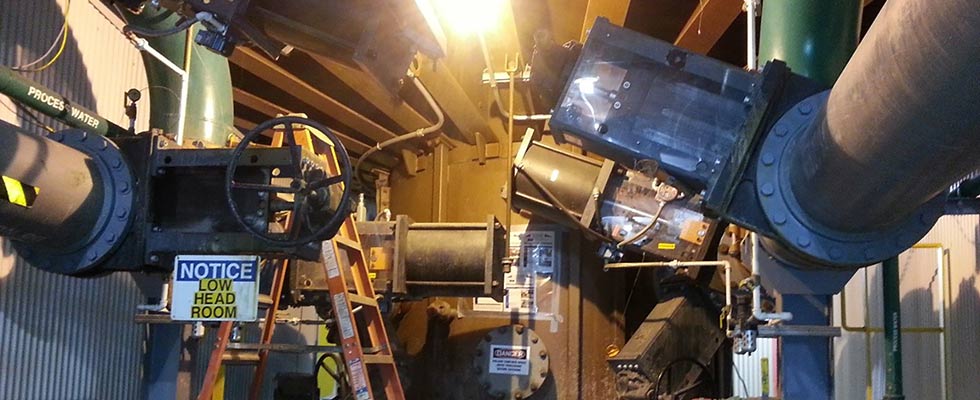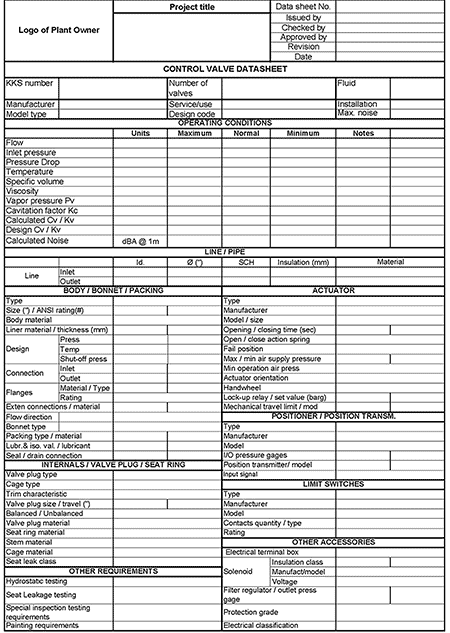
Water is a critical resource in all mining operations. Water is used in many processes including hydro-transport, solution leaching, dust control, screening and separation, to name a few. Minimizing water usage has been an increasingly important priority for the mining industry over the past few decades. Newer technologies such as dry stack tailings and in-pit processing are being evaluated as additional methods to conserve water. A critical component to the overall success of any dewatering technology is valve performance.
Dewatering begins after the ore is separated from the waste materials or tailings. Each mine site has specific and unique challenges in dewatering processes due to different ore types. Selection of the optimum valve for each process will impact overall system performance and improve the efficiency of returning precious water to the facility for reuse.
Many tools are available for searching and comparing valve options. Application data sheets that outline application conditions (pressure, temperature, viscosity, specific gravity, percent solids and pH) are necessary for selecting correct valves. Standards and specifications, both industry and internal, help to further define valve requirements such as flange and body ratings, testing and material standards. Specifications can also define shut-off, isolation and leakage capabilities. A solid valve specification is a vital starting point. Documenting industry standards and internal minimum requirements ensures informed comparisons of valve solutions offered by multiple suppliers.
When selecting valves for dewatering applications, factors such as corrosion, abrasion, scaling, valve orientation, cycle frequency, cycle time and overall system design must be considered to prevent potential issues.
Corrosion:
To prevent corrosion, the media specs should define both concentrations and temperatures and include both normal and upset conditions. Specifications should also define chemicals or procedures used for flushing or cleaning the lines to ensure valve materials selected are compatible. Using a steam jetty to clean severe scale in the pipeline, for example, can easily cut or destroy elastomer seats and seals.
Abrasion:
A common problem in tailings systems is abrasion. Technologies to combat abrasion include weld overlays, spray coatings, ceramics and nonmetal liners such as rubber and urethane. Rheological studies of abrasive materials have found that, along with percent solids and velocity, the size and shape of the solid particles have a considerable impact on abrasion-resistant technologies. In some applications, the combination of corrosion and abrasion is double trouble, not only because it limits options but also because safety becomes a major concern. Abrasive materials will eventually wear out seats, seals or even valve bodies. Minimizing the risk of media exposure to personnel and the environment must be given due consideration.

Scaling:
Scaling is often a condition missed in application data. Material buildup on the flow control component and seating surface can damage an isolation valve and shorten its life. Scaling causes valves to seize or lock up, often in a partially open position. A seized valve limits flow and prevents isolation, requiring almost immediate and unplanned downtime. Solutions for scaling applications include oversized actuation, coatings or alternate valve types, but each solution comes with its own limitations.
Valve orientation:
Orientation of valves in the pipeline can often affect performance. A variety of valve orientations are shown in a hydro separator in Image 1. When the drawing came out for bid, the valves were depicted in the vertical position in horizontal lines—typical for knife gate valves. The application data sheets noted excessive wear could be expected in the lower portion of the piping due to heavy solids settling and dragging along the pipeline. The valves purchased for the project included a weld overlay in the lower third of the port to resist wear from settling solids. The remaining portion of the valve port was left as standard carbon steel as specified. During installation, space limitations caused the valves to be installed in various orientations instead of vertical. This meant the overlay designed to protect the lower valve port from abrasive wear was not positioned correctly and the valves failed sooner than expected.
Cycle frequency:
Cycle frequency can have an appreciable impact on the performance of an isolation valve. Depending on the valve type, manufacturers recommend at least partially cycling a valve every three to six months. When a valve is operated less frequently, it can lock up due to scale or corrosion (internal or external). Also, valve soft seats and seals can become less resilient, causing damage to other components. High cycle applications in abrasive services can cause premature wear of soft seats—attention to material selection is important.
Cycle time:
Unwanted hydraulic surges or slams in the piping system occur when operating a valve too quickly. Some systems require a quick-closing valve to prevent reverse flow, normally a check valve. Occasionally, a fast-acting knife gate valve will be used in conjunction with a pump shut-off signal to prevent reverse flow due to high solids concentration with settling particles. As an example, a 30-inch valve may be required to close in five to six seconds. A push-through-style, rubber-lined knife gate valve would not be a good choice, even though it meets all other criteria for slurry handling. The push-through-style valve has a closing speed of approximately 1 inch per second for proper gate/liner performance, which means the valve would take 30 seconds to close. Closing at the higher speed would damage the push-through-style valve, shutting down the tailings line. Another style valve should be considered.
Overall system design:
Once a new system or rebuild is complete, operation is turned over to the end user. Startup, shutdown and operating procedures may be different than the original design conditions. When a valve issue arises, the original data is reviewed and the valve selection process repeats itself. Considering these variations when trying to solve a valve problem can be beneficial. Tracking equipment performance to standardize best practices can be beneficial for reducing wear and maintenance on equipment.
These issues discussed apply to dewatering technology commonly used today at mine sites. However, it is important to look at two newer technologies designed to capture more water quickly and how these technologies will impact valve design and selection.
Dry-stack tailings:
Dry-stack tailings are used in small-to-medium mine operations, especially where water is scarce and costly. Filter presses are used to dewater tailings to approximately 5% to 6% moisture content before they are moved to dry stack. This eliminates water losses to evaporation and increases efficiency in filtration and reuse compared to traditional tailings ponds. The valve challenges are due to higher pressures and frequent cycling required by filter press systems. Filter press systems typically have high pressure drops across the inlet/feed valves of high-solids slurry, creating a difficult valve application.
In-pit processing:
A developing technology in oil sands mining is in-pit extraction processing. This process uses a modular extraction plant that can be moved with the mining operation in the pit. The technology extracts the bitumen near the mining operation and produces dry stackable tailings, minimizing water used in hydrotransport. Valve challenges are anticipated to be increased wear and valve cycling, along with challenges of remote operation and exposure to the elements.
Water conservation, capture and reuse are vitally important to mining’s future. Reliable valve performance ensures efficient operation of essential dewatering processes. Experienced sales engineers with reputable manufacturers that understand individual mining processes and requirements can provide valuable advice when selecting valves for difficult applications.

